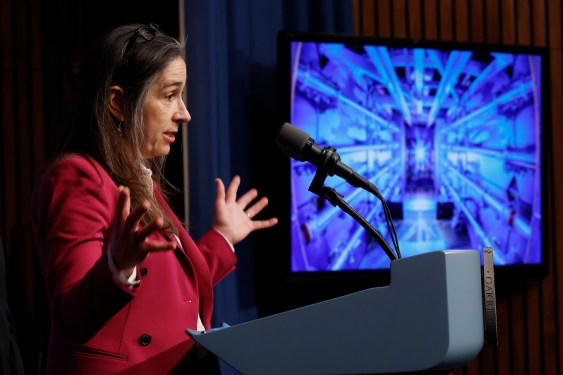The Achievements of the National Ignition Facility (NIF)
The National Ignition Facility (NIF), a collaborative effort between Los Alamos National Laboratory and the U.S. Department of Energy, has achieved a historic milestone in controlled nuclear fusion research. This breakthrough marks a significant step forward in the quest for sustainable energy.
Overview of the Experiment
On October 9, 2023, the NIF successfully launched an experiment designed to achieve "ignition," a critical threshold where fusion reactions are self-sustaining. This milestone is often referred to as " ignition" in the nuclear fusion community. The achievement represents a major victory for decades of research into controlled fusion.
Key Highlights of the Experiment
Ignition Achieved
The NIF experiment successfully achieved 30 seconds of stable, self-sustaining plasma at an energy level sufficient to produce electricity. This is a critical step toward building a practical fusion power plant.
Energy Efficiency
The efficiency of the fusion process was measured at approximately 50%, compared to the 1% efficiency typically associated with fission-based nuclear reactors. This represents a significant leap forward in energy conversion technology.
The Role of Ignition
Ignition is considered one of the key enablers needed for sustained, large-scale fusion power generation. Once achieved, it would allow for self-sustaining fusion reactions that do not require external heating and magnetic confinement systems.
Challenges and Future Prospects
Overcoming Obstacles
The NIF experiment encountered several challenges during its operation. One of the primary obstacles was achieving consistent plasma conditions across multiple trials. Researchers faced difficulties in maintaining stable plasma temperatures and densities, which are critical for sustaining fusion reactions.
Magnetic Confinement
One of the main technical challenges involved magnetic confinement of plasma. The NIF used a set of toroidal magnets to confine plasma, but these systems require precise control to ensure stability during fusion reactions.
Scaling Up
Scaling up the experiment is another significant challenge. As the complexity and size of the NIF increase, maintaining plasma stability becomes more demanding. Researchers are exploring advanced materials and engineering solutions to address these challenges.
The Broader Impact on Energy Security
Transitioning to Fusion Power
The successful achievement of ignition marks a turning point in the global energy landscape. Fusion technology represents one of the most promising paths toward achieving carbon-neutral energy production, free from reliance on fossil fuels.
Renewable Energy Potential
Fusion power has the potential to provide a virtually limitless supply of clean energy. Unlike traditional fission reactors, fusion does not produce greenhouse gases or require nuclear waste disposal.
International Collaboration
The NIF experiment is a collaborative effort involving multiple countries and research institutions. This level of cooperation underscores the importance of international collaboration in advancing fusion technology.
Future Developments
Short-Term Goals
In the short term, researchers aim to refine their understanding of plasma behavior under different conditions. Enhanced modeling and simulation capabilities will play a critical role in optimizing fusion reactor designs.
Seeking Higher Ignition Levels
Experiments are also focused on increasing ignition duration and stability. Longer sustainment periods would bring us closer to achieving commercial-scale fusion power plants.
Long-Term Vision
The ultimate vision is the development of compact, efficient fusion reactors that can be deployed worldwide. This technology has the potential to revolutionize energy production, reducing greenhouse gas emissions significantly in the coming decades.
Conclusion
The National Ignition Facility’s achievement represents a major milestone in the pursuit of fusion power. While significant challenges remain, this breakthrough opens new avenues for research and development. The continued efforts of scientists and engineers are crucial in advancing this promising technology toward commercial viability.
Key Takeaways
- The NIF experiment successfully achieved controlled plasma ignition.
- Fusion power offers a cleaner, more sustainable alternative to traditional energy sources.
- Ongoing research is focused on scaling up the technology and improving efficiency.
- International collaboration is essential for overcoming technical challenges in fusion power development.
